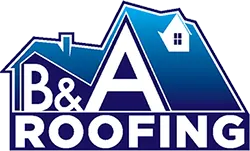Having a leaky roof can be any homeowner’s worst nightmare, causing expensive repairs and serious damage. One common culprit of this? Improperly nailed shingles. To help you out, here is a quick blog post that will show you the right way to nail shingles. With the right technique, your roof will remain sturdy and leak-free for years to come.
Why Proper Nailing Matters For Shingle Roofs

Proper nailing is key to making asphalt shingles last and perform well. It keeps the roof watertight, wind-resistant, and protected from leaks or shingle loss. Using the right number of nails in the correct spots helps secure each shingle, preventing early wear and maintaining durability.
Consistent nail depth and spacing are also important, as not following manufacturer guidelines can void warranties. With proper nailing, shingles stay in place, protecting against wind and water damage while keeping the roof strong and visually appealing.
Materials and Tools Needed
To properly nail shingles into place, you’ll need the right tools and materials—let’s check the list:
| LIST OF MATERIALS AND TOOLS |
| Roofing Shingles |
| Roofing Nails |
| Hammer/Nail Gun |
| Chalk Line |
| Measuring Tape |
| Safety Glasses |
| Work Gloves |
| Safety Harness/Rope |
| Pry Bar |
After you’ve gathered the tools and materials, you’re ready to begin nailing.
Preparing for Installation
Before nailing shingles, you need a clean, solid roof deck and the right setup. Here’s how to prepare:
1. Inspect the roof deck
Remove old nails, debris, and anything that could prevent shingles from laying flat. Make sure the deck is clean, dry, and free of damage. Repair any weak or rotted sections.
2. Follow safety precautions
Wear a hard hat, gloves, eye protection, and non-slip shoes.
3. Clear the area
Keep the space around your home free of obstacles like outdoor furniture and toys.
4. Check the weather
Avoid extreme temperatures and wet conditions as they can affect how the shingles seal. Only install shingles on a dry day.
Step-by-Step Guide to Nailing Roofing Shingles
Next, let’s go through each step on how to nail shingles for a long-lasting roof:
Step 1: Prepare the Roof Deck
As mentioned above, before roof installation, the roof deck must be clean and solid. Remove old roofing materials, including shingles, nails, underlayment, and debris. Check the deck for damage like rot or warping, especially around chimneys, vents, and valleys. Replace any weak sections to ensure a strong, even surface for installing shingles. A dry and sturdy deck is essential for long-lasting shingles.
Step 2: Install Underlayment
Underlayment adds a protective layer between the roof deck and shingles, blocking moisture. Roll it out horizontally from the eaves up, overlapping each row by at least 2 to 4 inches (check manufacturer guidelines). Secure it with roofing nails or staples. While there are many types of underlayments available, synthetic underlayment is a durable option with great water resistance.
Step 3: Mark Shingle Placement
Use a chalk line to mark straight horizontal guidelines on the roof deck. This ensures shingles are evenly aligned and spaced properly for effective water drainage and weather protection. Always follow the manufacturer’s guidelines when shingling a roof.
Step 4: Install the Starter Course
The starter course is the first row of shingles along the eaves. These provide a solid base for the rest of the shingles and help prevent wind uplift and water leaks. Install them with the adhesive strip facing up and the bottom edge lined up with the drip edge.
Step 5: Install the First Course of Shingles
Lay the first full row of shingles directly above the starter course, aligning with the chalk lines. Ensure proper overlap so each shingle covers the roof nails of the row below. Follow the recommended offset nail pattern for shingles to avoid weak spots when installing shingles.
Step 6: Nail the Shingles Correctly
- Nail Placement: Use at least four roofing nails per shingle (or six in high-wind areas). Place them just above the sealant strip or along the marked nailing area.
- Nail Type: Use galvanized or stainless steel roof nails with large heads for better hold. Nails should penetrate at least ¾ inch into the roof deck.
- Nailing Technique: Drive the nails straight and flush with the shingle surface. Avoid overdriving (which can damage shingles) or underdriving (which can cause bumps). If a nail is misplaced, remove it and reposition it slightly.
Step 7: Continue Installing Shingles
Keep shingling a roof by following the chalk lines for straight rows. Cut and fit shingles around roof features like vents, chimneys, and skylights. Use flashing around these areas for extra protection against leaks.
Step 8: Install Ridge Caps
At the highest point of the roof, install ridge caps to cover the seam. These are a specific type of shingle that is curved to fit over the roof peak. Overlap them correctly and secure them with roofing nails to complete the roof installation.
Step 9: Inspect and Clean Up
Check the entire roof for missed nails, misaligned shingles, or other issues. Fix any problems right away. Clean up all debris, including extra roof nails and shingle scraps, and dispose of waste properly.
Common Shingle Nailing Mistakes to Avoid
Even small installation mistakes can weaken your roof. Below are the most common ones to watch out for:
1. Wrong Nail Placement
Nails should go in the designated area, just above the adhesive strip. Placing them too high can leave shingles unsecured and void warranties.
2. Not Enough Nails
Use the right nail pattern and number of nails (usually four, but six for steep slopes). Too few can cause shingles to blow off.
3. Angled Nails
Nails should go in straight for a secure hold. Hand-driven nails are often angled, reducing effectiveness.
4. Overdriven or Underdriven Nails
Nails should sit flush with the shingle. Overdriving can damage shingles while underdriving makes them more likely to lift in the wind.
5. Wrong Nail Length
Nails should be long enough to secure shingles firmly into the decking.
6. Nailing Into Weak Spots
Avoid placing nails in cracks, knotholes, or gaps in the roof deck.
7. Exposed Nails
Nails should be covered by the next shingle layer. Exposed nails are more likely to rust and cause leaks.
8. Non-Corrosion-Resistant Nails
Always use rust-resistant nails to prevent deterioration.
9. Misaligned Shingles
Proper alignment prevents exposed nails and maintains a clean, secure roof.
Get Expert Shingle Roofing Services From B & A Roofing and Gutters!
Handling a roofing project on your own can be tough. B & A Roofing and Gutters is here for you. We specialize in giving quality roof replacements, making the process smooth and hassle-free. Our skilled team uses quality materials and trusted methods to give you a strong, leak-free roof that lasts. Contact us today at (601) 520-3183 to get the best for your roof!


